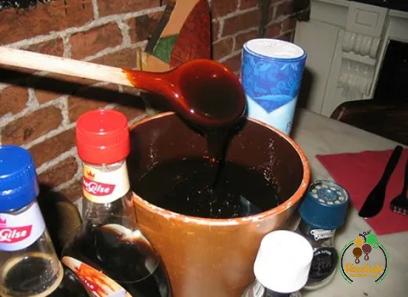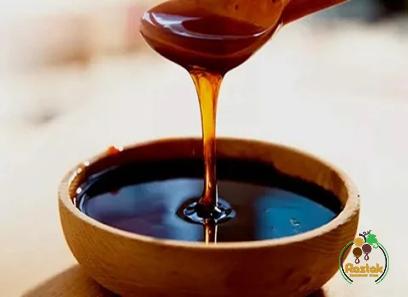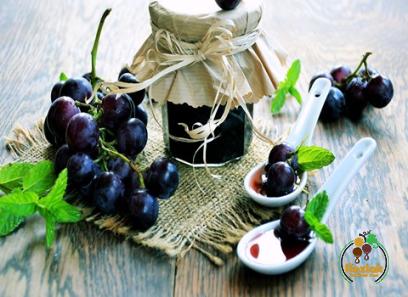The word “Sultani Raisin” refers to a grape that has been allowed to dry completely before being cut into bite-size pieces and stored in bulk storage. Then these grapes were called “Kashmesh Soltani”.
This includes any exceptional dried fruit or grape currently on the market. Grape varieties grown in a particular country can differ significantly from each other.
The name Sultan is because the type of grape used to produce raisins is called Sultan, and the word Sultan is also derived from this fact. The term is regularly used in a wide variety of contexts, both inside and outside the United States. Its use is widespread.

Raisins are a type of dry fruit that is delicious, seedless and relatively small in quantity. They are also known as zante raisins and cornet raisins. In the production of these wines, cornet black grapes, which are also called Zante vine and cornet grapes, are used.
Due to the fact that the terms “raisin”, “raisin” and “raisin” are all synonymous, many people often confuse them. At first glance, it appears that they come in three distinct color variations. But, other than that, they are exactly the same in every other way.
The term “raisin” actually refers to a more general category of dried fruits, which includes not only raisins but also sultanas. Consider each of these ideas separately.
Raisin is a type of grape that is dried and then stored. This includes specially prepared grapes or grapes that have been dried. Grape varieties can vary significantly from country to country.
On the other hand, some people use black grapes, while others use green or white grapes in their preparation. Raisins are a staple ingredient in a variety of cuisines and can be sourced from various geographic locations around the world.

Raisins are grown in all kinds of climates and soils all over the world. Soltane and kashmesh are both types of raisins in their respective dictionaries. Large, black grapes that are dried are known as raisins.
Golden grapes and black grapes that are dried are known as Sultan. The term “raisin” is used in a number of countries, including but not limited to the United Kingdom, New Zealand, Australia, Canada and Ireland. grape
The word raisin originates from the French language and is related to grapes. The Middle English term “raisin” is borrowed from the French word. The term “piled wax” refers to the grapes after drying.
There are four stages in the production process of raisins: harvesting, pre-treatment, drying and post-drying. The first thing to do is to select and then harvest the grapes to make raisins. An oil emulsion or a weak solution of caustic soda is applied to these grapes before fermentation.
As a result of using this solution, grapes can dissolve water in half the time. Initially, grapes were soaked in cold and dry emulsions of potassium carbonate and fatty acid ethyl esters in areas such as the Mediterranean and Asia Minor.

Raisins go through a process that involves drying. Drying can be done in three different ways: in the sun, in the shade or in the dryer.
In general, sun and shade drying are more efficient and cost less, but take significantly longer and do not remove all moisture.
Grapes are often dried using a machine instead of a microwave. The process of heating raisins in the microwave results in a softer texture.
After going through the initial drying process, the raisins go through the final drying process where they are washed, cleaned and the stems are removed. They are getting ready to pack.
The name “Sultan” is the type of grape used to make raisins. This term is commonly used in countries other than the United States. Because of their golden color, people sometimes refer to them as “golden raisins”.
To preserve their golden color, these raisins are bleached with sulfur dioxide and then dried on special vines or racks.
The color of American Sultana wine may darken after the grapes are dried or after prolonged exposure to the sun. Sultana type grapes are also known as Sultanina.
This type of seedless grape is known as Thompson in the United States. They most likely came from the Asian provinces of the Ottoman Empire in their first appearance.
Raisins can be made from any type of green grape, but in the Middle East, golden raisins are commonly used because they allow the raisins to retain their flavor and texture better.
Raisin, also known as zante raisin and cornet raisin, is a type of dried fruit that is sweet, seedless and very small. They are produced from the black Cornet grape, also known as the Cornet grape and the Zante grape.
The name Raisin de Corinthe is derived from the common English word “wine of Corinth”, which is French “Raisin de Corinthe”. “Corinthian wine” is a colloquial English term.
Xanthine takes its name from the Ionian island of Zakynthos, which is also called Xanthos.
In the past, this island was the most important producer and exporter of grapes and raisins in the whole world.
Some grape varieties produce red and white berries in addition to black grapes, while others produce black grapes along with red and white berries.
Plain Senior was the first to document the raisin, which is generally agreed to be the longest raisin in the history of the world.











Your comment submitted.